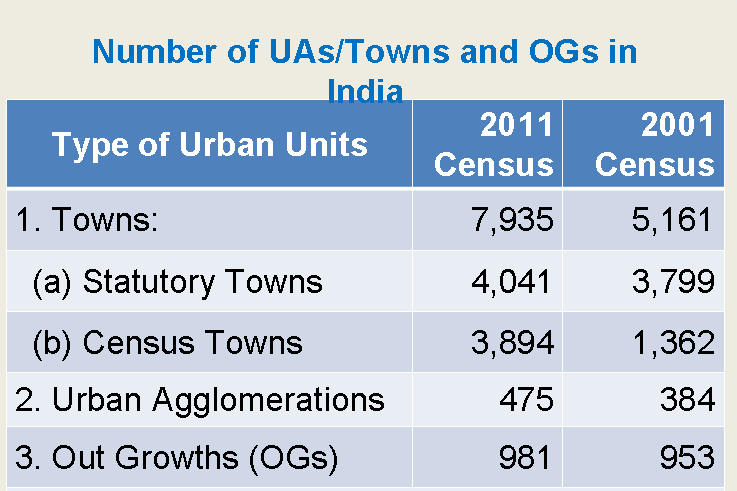PREVIOUS
Definition of an urban area
August 26 , 2025
15 hrs 0 min
31
0
- The Census 2027 will keep the same definition of an urban area as used in Census 2011 to ensure consistent comparison of urbanisation trends.
- An urban unit or ‘census town’ is defined as
- A village with a minimum population of 5,000
- A population density of 400 persons per square kilometre, and
- At least 75% of the male working population is engaged in non-agricultural work.
- In 2011, India had 15,870 urban units and towns, with 31.2% of the population living in urban areas, while 68.8% lived in rural areas.
- The total number of villages in 2011 was 640,867, with the urban population rising from 17.3% in 1951 to 31.2% in 2011.
- The Registrar General of India instructed states to prepare updated lists of villages and towns reflecting jurisdictional changes up to December 31, 2025.
- Statutory towns will be counted as they exist on January 1, 2026.
- The date when administrative boundaries will be frozen before Census operations begin on April 1, 2026.
- Villages with populations of 4,000 or more in 2011 will be examined to identify those likely to have reached 5,000 by 2027.
- Male workers engaged in agriculture, plantations, livestock, forestry, fishing, hunting, and related activities are excluded from the non-agricultural category.
- District or sub-division headquarters will be classified as census towns only if they meet the demographic criteria and are not statutory towns.
- Grouping of multiple villages as a single census town is disallowed; each village will be treated as a separate unit.
- The Census 2027 will begin with house listing and housing census from April 2026, and the population enumeration phase in February 2027.
- Administrative boundaries must be finalised by December 31, 2025, to be used in the Census process.

Leave a Reply
Your Comment is awaiting moderation.


